- Krótkie narty takie jak Snowfeet* Skiblades (99 cm) i Short Skis (120 cm) są kompaktowe, łatwe do transportu i idealne na ciasny, techniczny teren. Stawiają na zwinność i szybkie skręty, co czyni je świetnymi na muldy, zjazdy między drzewami i wąskie żleby. Ceny wahają się od 490 do 690 USD.
- Długie narty od marek takich jak Nordica, Völkl i Salomon oferują niezrównaną stabilność i prędkość, zwłaszcza na przygotowanych trasach i w głębokim puchu. Jednak mogą wydawać się nieporęczne i trudniejsze do manewrowania w ciasnych przestrzeniach.
- Narty Snowfeet* są lekkie, przyjazne w podróży i mniej męczące podczas długich sesji, ale mogą nie radzić sobie tak dobrze z dużymi prędkościami lub jazdą w puchu jak tradycyjne narty.
Szybki przegląd:
- Krótkie narty (Snowfeet*): Kompaktowe, zwrotne, łatwe do przenoszenia, świetne do technicznego narciarstwa.
- Długie narty (Nordica, Völkl, Salomon): Stabilne, potężne, lepsze do prędkości i jazdy w puchu.
Chcesz narty, które są przenośne i zabawne na technicznym terenie? Wybierz krótkie. Wolisz stabilność i prędkość? Zostań przy długich nartach. Zagłębmy się w szczegóły.
Jedna kolekcja nart 2025 | Najlepsze narty all-mountain
1. Snowfeet* Skiblades 99 cm
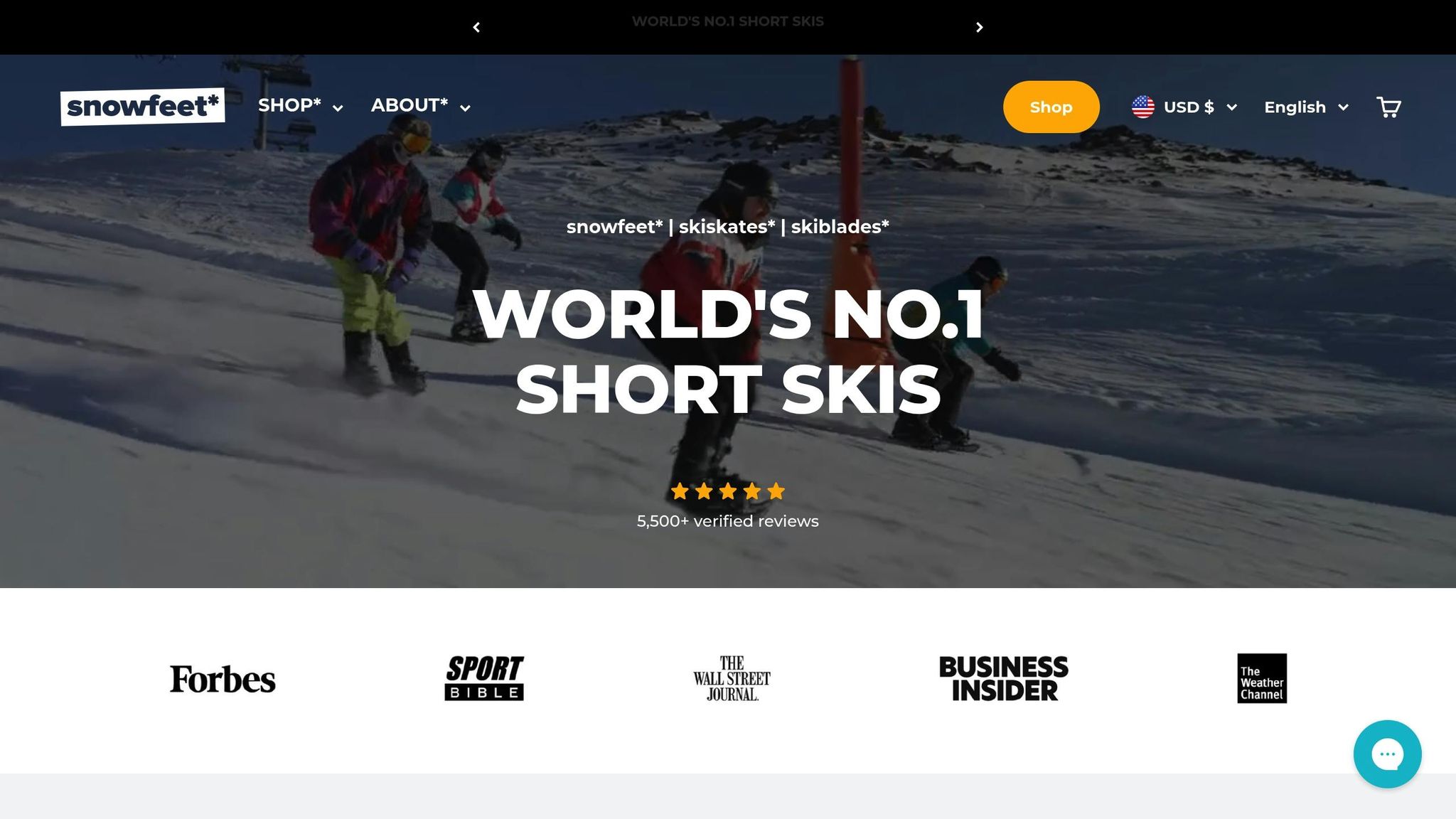
Snowfeet* Skiblades 99 cm wprowadzają świeże podejście do narciarstwa all-mountain dla doświadczonych jeźdźców. Mając zaledwie około 39 cali długości, te kompaktowe narty oferują moc, która rzuca wyzwanie tradycyjnym konstrukcjom narciarskim.
Precyzja i kontrola krawędzi
Te 99 cm skiblades doskonale sprawdzają się na twardym śniegu i przygotowanych trasach dzięki pełnej metalowej krawędzi. W przeciwieństwie do dłuższych nart all-mountain, takich jak seria Nordica Enforcer z podwójnymi warstwami titanal, Snowfeet* skiblades skupiają się na maksymalizacji kontaktu krawędzi na krótszej długości. Efekt? Błyskawiczna reakcja na każdy ruch narciarza. Zaawansowani narciarze docenią, jak szybko te narty inicjują skręty, a głęboki sidecut pozwala na szybkie przejścia krawędź do krawędzi, które przypominają niemal jazdę na łyżwach. Ten design ułatwia precyzyjne dostosowanie linii i utrzymanie kontroli, zwłaszcza na terenach, gdzie dłuższe narty (170–185 cm) mogą mieć trudności.
Radzenie sobie ze zróżnicowanym terenem
Prawdziwa magia tych skiblades objawia się na zróżnicowanym terenie. Przyjmując wyprostowaną postawę i stosując szybkie, częste skręty, zaawansowani narciarze mogą w pełni wykorzystać ich potencjał. Na nierównym śniegu ich krótsza długość pozwala na zwinny styl „rzut i odbicie”, co stanowi wyraźny kontrast do metody przecinania śniegu dłuższymi nartami, takimi jak Völkl Mantra. Na muldach skrócony tył zapobiega haczeniu i umożliwia ostre, kontrolowane zmiany kierunku, co czyni je wymarzonym wyborem do poruszania się po nierównym terenie. Te skiblades zostały zaprojektowane, by z łatwością radzić sobie z różnorodnymi wyzwaniami all-mountain.
Kompaktowe i przyjazne w podróży
Jedną z największych zalet 99 cm skiblades jest ich przenośność. Mając mniej niż 40 cali, mieszczą się wygodnie w większości bagażników samochodowych, eliminując potrzebę bagażników dachowych. Są też łatwe w podróży, co sprawia, że podróż samolotem jest mniej uciążliwa. Ich lekka konstrukcja, połączona z systemem smyczy zamiast tradycyjnych hamulców narciarskich, czyni je wygodnym wyborem dla narciarzy, którzy chcą wszechstronnej opcji na szybkie wypady lub nawet miejskie przygody na nartach.
Zwinność w ciasnych miejscach
Kompaktowa konstrukcja to nie tylko wygoda transportu – to prawdziwa rewolucja na stokach. Te skiblades błyszczą w ciasnych przestrzeniach, gdzie dłuższe narty mogą być nieporęczne. Niezależnie czy przeciskasz się przez gęste drzewa, pokonujesz wąskie żleby, czy poruszasz się po zatłoczonych trasach w ośrodku, ich lekka waga pozwala na szybkie obroty i precyzyjne odzyskiwanie równowagi. Krótsza długość ułatwia ostre zmiany kierunku i umożliwia skręty z podskokiem w ograniczonych przestrzeniach, gdzie dłuższe narty miałyby trudności. A dla miłośników parków terenowych, te skiblades sprawiają, że obroty, butters i inne triki są bardziej dostępne i kontrolowane.
| Typ terenu | Zaleta 99 cm | Ograniczenia tradycyjnych nart |
|---|---|---|
| Gęste drzewa | Szybkie obroty, bez zahaczenia tyłem | Wymaga szerokich skrętów, ryzyko zahaczenia tyłem |
| Muldy | Szybkie, precyzyjne dostosowania | Trudniej dokonać szybkich korekt |
| Wąskie żleby | Łatwe skręty z podskokiem | Ograniczona zwrotność |
| Zatłoczone stoki | Proste, ostre zmiany kierunku | Potrzebują więcej miejsca do manewrowania |
Za około 490 dolarów, Snowfeet* Skiblades 99 cm oferują zwinne, precyzyjne doznania narciarskie. Są idealne dla zaawansowanych narciarzy, którzy cenią sobie zwrotność i techniczną wydajność ponad samą prędkość, co czyni je fantastycznym dodatkiem do wyposażenia każdego narciarza.
2. Snowfeet* Short Skis 120 cm
Snowfeet* Short Skis 120 cm łączą wszystko, co kochasz w krótkich nartach, dodając odrobinę mocy i kontroli. Podczas gdy model 99 cm stawia na zwinność, wersja 120 cm podnosi poprzeczkę dzięki większemu kontaktowi z powierzchnią i stabilności. Mając nieco poniżej 47 cali długości, te narty idealnie balansują między szybkim, zabawnym charakterem skiblades a solidną wydajnością tradycyjnych nart all-mountain.
Precyzja i trzymanie krawędzi
Dzięki długości 120 cm, te narty oferują lepszy kontakt krawędzi, co przekłada się na mocniejszą przyczepność na oblodzonych stokach i twardym śniegu. Jeśli jesteś zaawansowanym narciarzem, od razu zauważysz poprawioną stabilność podczas jazdy z większą prędkością. Ta dodatkowa długość pomaga utrzymać stałe naciski na krawędź, dzięki czemu długie skręty carvingowe są płynne i kontrolowane. W przeciwieństwie do dłuższych nart w zakresie 170-180 cm (pomyśl o serii Salomon QST), te krótkie narty dają precyzję bez uczucia nieporęczności.
Zwiększona powierzchnia pomaga też w unoszeniu się na nierównym śniegu, ale nadal zachowują szybką reakcję krawędź do krawędzi, z której znane są krótkie narty. Niezależnie od tego, czy suniesz po przygotowanych trasach, czy przecinasz nawiany śnieg, te narty są przewidywalne i niezawodne, nawet gdy warunki śniegowe się zmieniają.
Moc na mieszanym terenie
Tam, gdzie te narty naprawdę błyszczą, to teren mieszany. Dodatkowa długość zapewnia większy kontakt ze śniegiem, co oznacza, że lepiej radzą sobie z nierównymi, wyboistymi warunkami niż krótsze modele. Na stromych zjazdach ta dodatkowa stabilność daje pewność, by podejmować agresywne linie, a jednocześnie pozwala na szybkie, ostre skręty, gdy teren nagle się zmienia.
Te narty zostały stworzone z myślą o wszechstronności. Na stromych zjazdach czujesz się stabilnie i pewnie, ale gdy szlak się wypłaszcza lub zwęża, szybko i płynnie skręcają. To czyni je świetnym wyborem do jazdy w ośrodkach narciarskich, gdzie możesz spotkać wszystko – od szerokich tras po wąskie przejazdy między drzewami podczas jednej jazdy w dół góry.
Przenośność i wygoda
Mimo że są najdłuższą opcją w linii Snowfeet*, narty 120 cm są nadal na tyle kompaktowe, że ich transport to pestka. Zmieszczą się w większości samochodów średniej wielkości – bez potrzeby bagażników dachowych – i łatwo je nosić wokół schroniska czy w kolejkach do wyciągów. Za 690 USD to opcja premium na rynku krótkich nart, ale zaoszczędzisz na opłatach za bagaż lotniczy i systemach bagażników dachowych, które często są potrzebne przy tradycyjnych nartach.
Dzięki lekkiej konstrukcji poczujesz też mniejsze zmęczenie podczas długich dni na stoku. Zredukowana masa oscylacyjna sprawia, że są łatwiejsze dla nóg, zwłaszcza podczas dłuższych sesji, więc możesz skupić się na czerpaniu radości z jazdy bez uczucia wyczerpania.
Zwinność w ciasnym terenie
Te narty wyróżniają się również podczas nawigacji w ciasnych przestrzeniach. Ich długość 120 cm to idealny kompromis do radzenia sobie z wąskim terenem. Choć nie są tak zwinne jak model 99 cm w bardzo ciasnych miejscach, są znacznie bardziej zwrotne niż dłuższe narty all-mountain, takie jak Atomic Maverick czy Blizzard Anomaly. W biegach między drzewami krótszy tył minimalizuje ryzyko zaczepienia o gałęzie lub elementy terenu, co jest częstym problemem przy dłuższych nartach.
Dla zaawansowanych narciarzy, którzy kochają wyzwania, te narty to marzenie w wąskich couloirach i żlebach. Pozwalają na szybkie, ostre zmiany kierunku przy zachowaniu kontroli nad prędkością. To oznacza więcej kreatywnych wyborów linii i możliwość płynnego odzyskania równowagi, jeśli coś pójdzie nie tak.
| Scenariusz narciarski | 120 cm Wydajność | Tradycyjne wyzwanie narciarskie |
|---|---|---|
| Zmieniający się teren | Stabilny na stromiznach, zwinny na płaskim | Wymaga dostosowania techniki |
| Narciarstwo między drzewami | Minimalne haczenie, szybkie obroty | Haczenie ogonem, szerokie skręty |
| Zróżnicowane warunki śniegowe | Stała wydajność | Częste zmiany techniki wymagane |
| Nawigacja w kolejce do wyciągu | Łatwa obsługa, kompaktowy rozmiar | Nieporęczne i niewygodne w tłumie |
Snowfeet* Short Skis 120 cm łączą stabilność tradycyjnych nart z zwinnością i wygodą krótkich nart. Dla doświadczonych narciarzy szukających wszechstronnej opcji, która radzi sobie w różnych warunkach i na różnych terenach, te narty oferują potężne, kompaktowe rozwiązanie, któremu trudno dorównać.
3. Nordica Enforcer 99
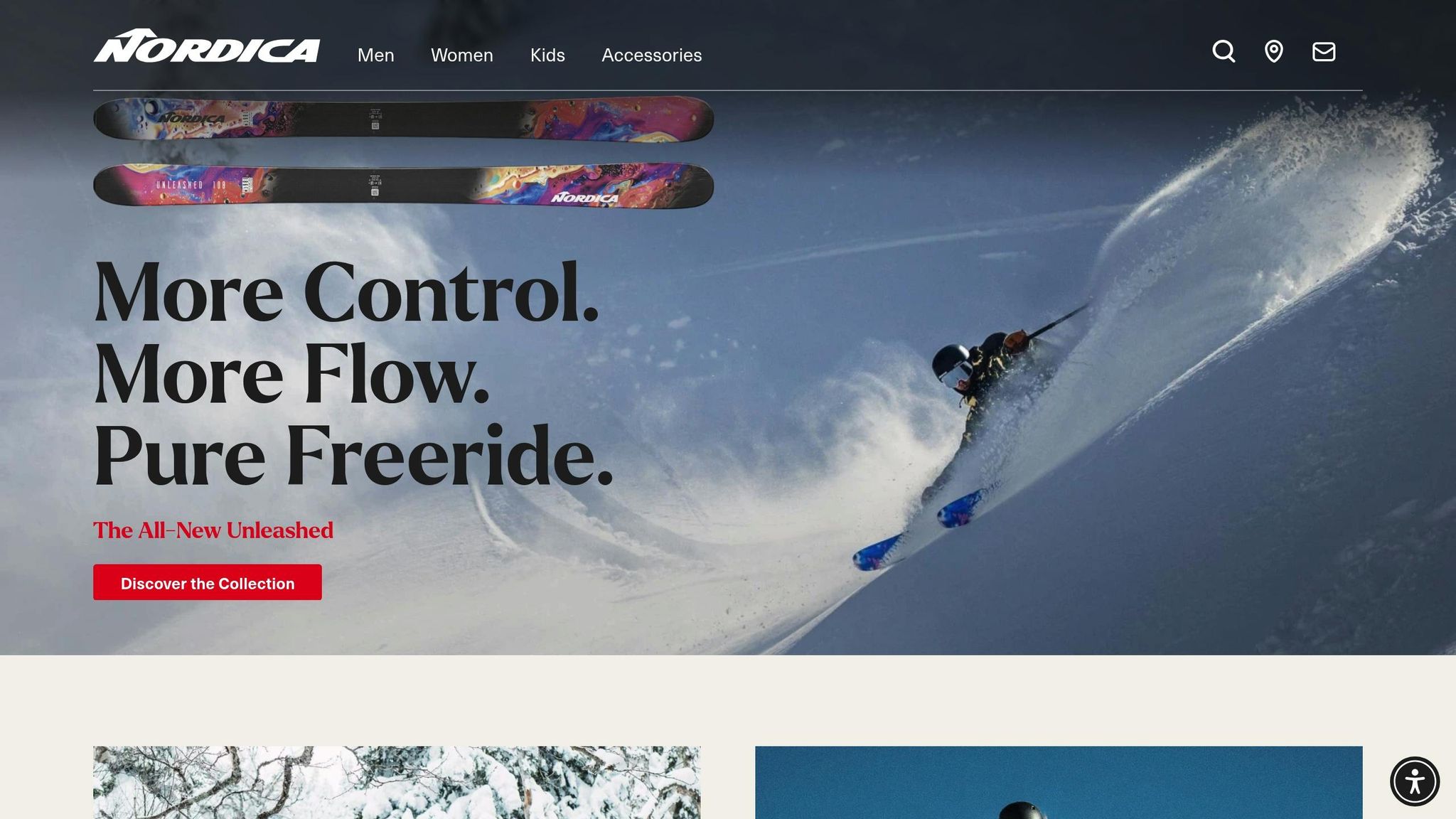
Nordica Enforcer 99 to klasyczne podejście do narciarstwa all-mountain, skupiające się na mocy i stabilności. Zaprojektowany dla zaawansowanych narciarzy, zwykle występuje w długościach około 170–180 cm i jest zbudowany, by pewnie radzić sobie z wymagającymi warunkami śniegowymi. Choć ta tradycyjna konstrukcja sprawdza się w niektórych aspektach, ustępuje pod względem zwinności i przenośności Snowfeet* Skiblades. Przyjrzyjmy się, jak radzi sobie w różnych sytuacjach.
Precyzja i trzymanie krawędzi
Jeśli chodzi o precyzję, Enforcer 99 błyszczy dzięki niezawodnemu trzymaniu krawędzi. Jego cięższa konstrukcja i większa długość zapewniają świetną stabilność na twardych lub oblodzonych trasach, co czyni go idealnym do carvingu długich, kontrolowanych skrętów. Jednak ta sama waga i rozmiar spowalniają przejścia, zwłaszcza w porównaniu z szybką, niemal natychmiastową reakcją kompaktowego designu Snowfeet* Skiblades.
Moc na mieszanym terenie
W zmiennych warunkach śniegowych waga i długość Enforcer 99 okazują się przydatne. Jego masa pomaga łatwo przebić się przez nierówny śnieg i grudki, a narty pozostają stabilne przy większych prędkościach. Ale jest haczyk: ta dodatkowa waga sprawia, że mniej wybacza szybkie zmiany terenu. Dla narciarzy, którzy wolą lżejsze, bardziej zabawowe odczucia, może to być męczące podczas długiego dnia na stoku.
Przenośność i wygoda
Jednym z największych minusów Enforcer 99 jest jego rozmiar i waga. Transport tych nart może być uciążliwy – zwykle wymagają bagażników dachowych lub innych specjalistycznych uchwytów, co wiąże się z dodatkowymi kosztami i niedogodnościami, zwłaszcza podczas podróży. Z kolei Snowfeet* Skiblades, które mają zaledwie 99 cm długości i ważą około 9 funtów, są na tyle kompaktowe, że mieszczą się w plecaku, co znacznie ułatwia ich przenoszenie.
Zwinność w ciasnym terenie
Wąski, techniczny teren może być wyzwaniem dla Enforcer 99. Jego większa długość i cięższa konstrukcja utrudniają szybkie, ostre skręty, a wydłużone ogony łatwo haczą o przeszkody. Choć świetnie sprawdza się na otwartych stokach, zawodzi w sytuacjach wymagających szybkiego, precyzyjnego manewrowania – w czym Snowfeet* Skiblades są mistrzami.
Dla zaawansowanych narciarzy, którzy cenią moc i stabilność, Nordica Enforcer 99 zapewnia solidne osiągi na jednolitym terenie. Jednak jego masa i tradycyjna konstrukcja mają swoje minusy, zwłaszcza jeśli chodzi o zwinność i przenośność, gdzie Snowfeet* Skiblades zdecydowanie mają przewagę.
4. Völkl Mantra M7/M6 (klasa 88–96)
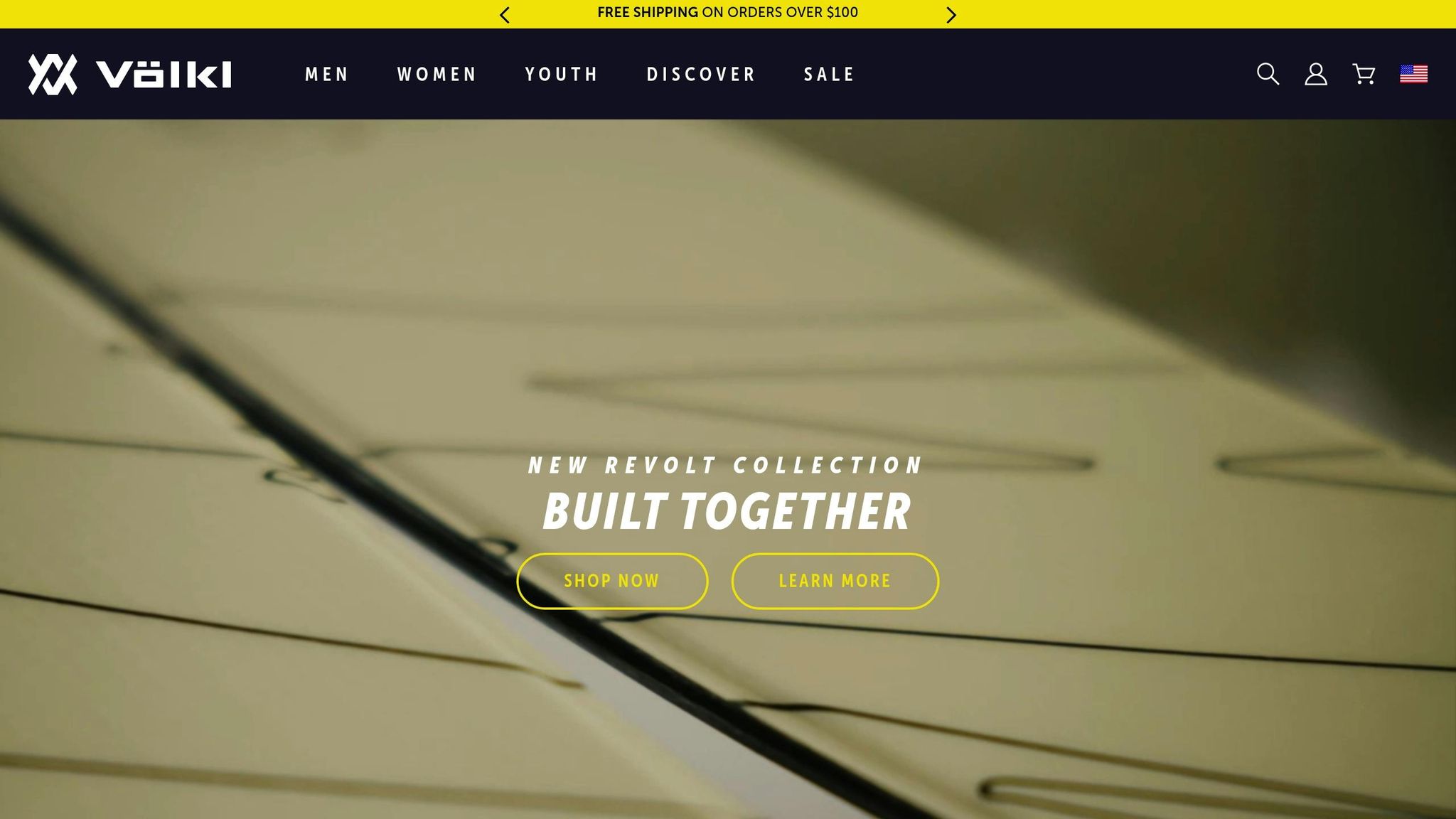
Seria Völkl Mantra M7/M6, z szerokością talii 95–100 mm, wyróżnia się dla narciarzy kochających carving. Te narty zapewniają doskonałą przyczepność krawędzi i szybkie inicjowanie skrętów, co czyni je ulubionymi wśród tych, którzy cenią precyzję na stoku. Ich design pozostaje wierny reputacji Völkl w zakresie stabilności i osiągów.
Jednak dla narciarzy, którzy chcą czegoś bardziej kompaktowego i zwinnego, Snowfeet* Skiblades oferują świeże podejście. W przeciwieństwie do tradycyjnych długich nart, ich krótszy, bardziej zwinny design zamienia kontrolę krawędzi w żywą i dynamiczną przygodę, idealną dla tych, którzy pragną szybkich ruchów i ostrych skrętów.
To wprowadza nas do kolejnej recenzji, w której zagłębimy się w to, jak innowacje krótkich nart wypadają na tle modeli takich jak Blizzard Anomaly 99. Bądźcie czujni!
5. Blizzard Anomaly 99
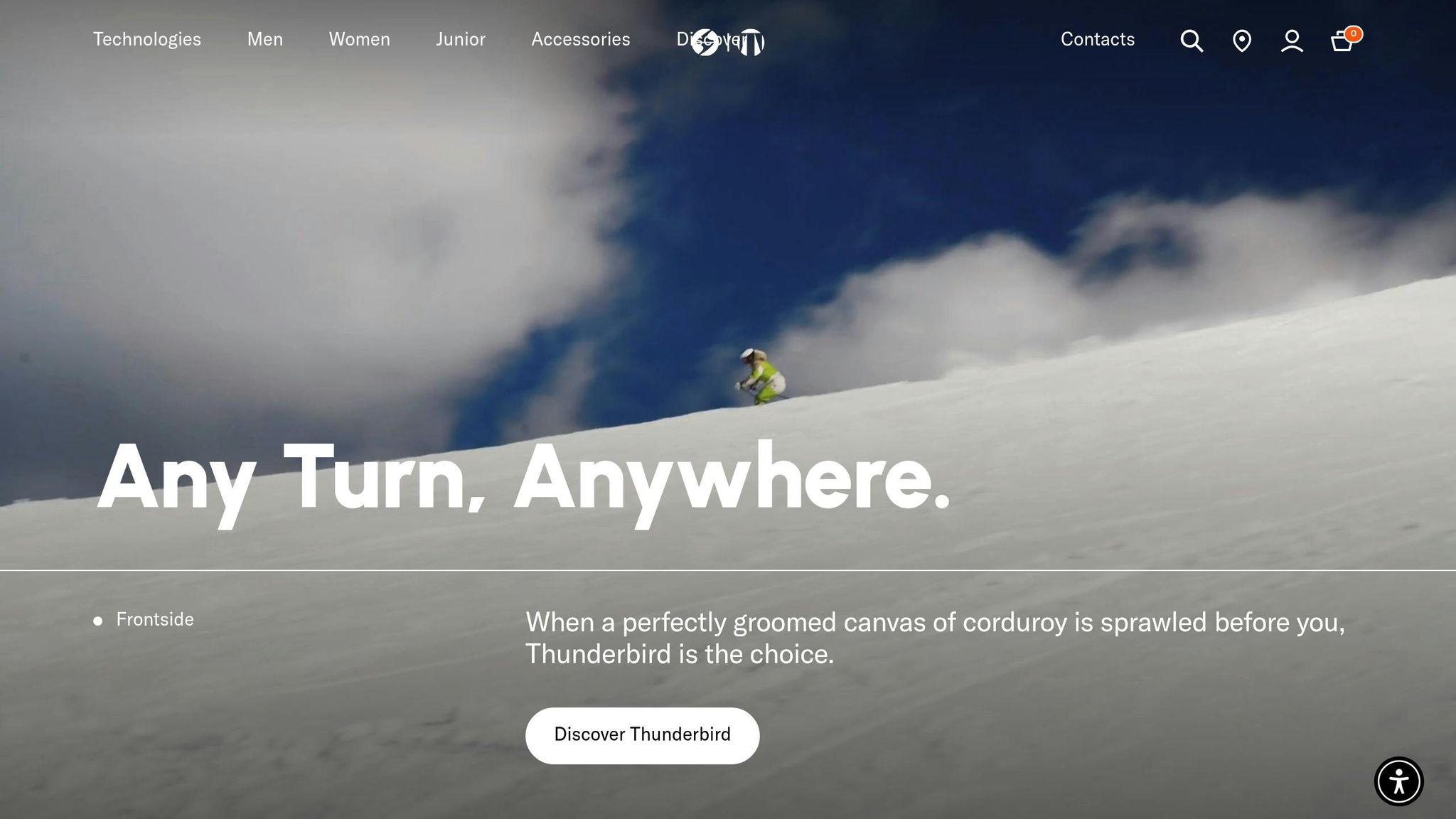
Blizzard Anomaly 99 to pełnowymiarowe narty all-mountain stworzone do prędkości i mocy. To wyraźny kontrast do kompaktowych i zwinnych Snowfeet* Skiblades.
Precyzja i kontrola krawędzi
Anomaly 99 to przede wszystkim stabilność, oferując szybkie przejścia krawędź do krawędzi i niezawodne osiągi przy dużych prędkościach. Ale jest haczyk: jego miękki przód i sztywny, potężny ogon mogą sprawiać, że skręty stają się nieprzewidywalne, gdy śnieg jest nierówny.
Radzenie sobie z mieszanym terenem
Na przygotowanych trasach Anomaly 99 błyszczy. Ale gdy warunki stają się trudne – jak w muldach czy przy wolniejszych prędkościach – może być trudny do opanowania. Tutaj Snowfeet* Skiblades wyprzedzają konkurencję, dzięki swojej zwinności są łatwe w prowadzeniu na stale zmieniającym się terenie. Różnica widoczna jest nawet w podróży, gdzie jedne są znacznie łatwiejsze do spakowania i przenoszenia niż drugie.
Projekt przyjazny podróżom
Prawda jest taka: narty pełnowymiarowe, takie jak Anomaly 99, mogą być uciążliwe w transporcie. Potrzebujesz dużych pokrowców na narty, bagażników dachowych i sporo miejsca do przechowywania. Z drugiej strony, Snowfeet* Skiblades są kompaktowe i łatwe do podróżowania, co czyni je wygodniejszym wyborem.
Ciasne przestrzenie i szybkie skręty
Jeśli poruszasz się po ciasnym terenie, długość Anomaly 99 może wydawać się wadą. Ten potężny ogon, choć świetny do prędkości, może utrudniać płynne skręty. Snowfeet* Skiblades są jednak zaprojektowane do ostrych, dynamicznych ruchów, dając Ci więcej swobody w wyborze kreatywnych linii.
Gdy to rozłożysz na czynniki pierwsze, Anomaly 99 oferuje tradycyjną moc i stabilność, ale ma pewne wyraźne ograniczenia, zwłaszcza w porównaniu z lekkimi i zwinnymi Snowfeet* Skiblades.
sbb-itb-17ade95
6. Salomon QST 106
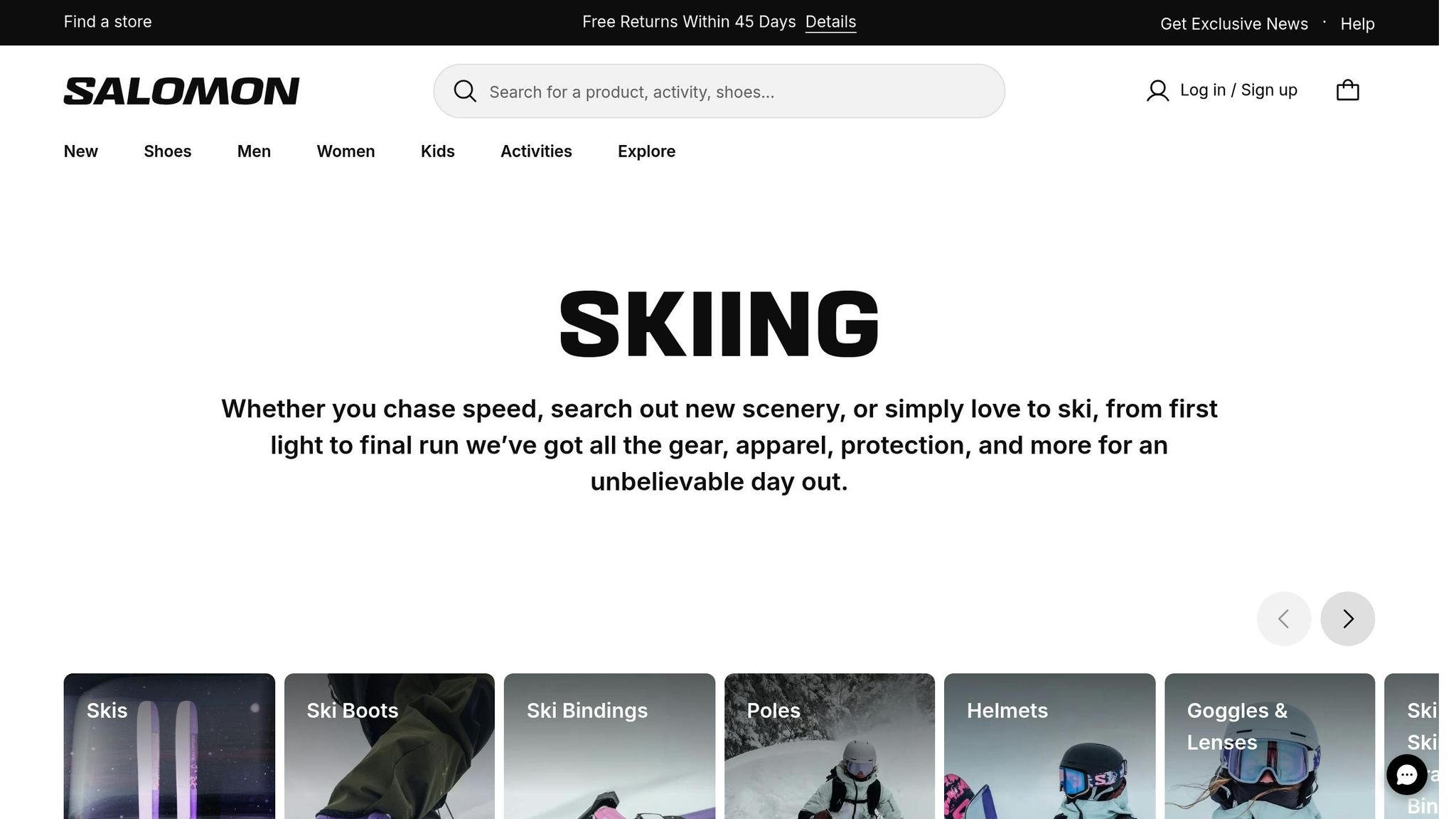
Salomon QST 106 to klasyczna narta all-mountain z talią 106 mm, zaprojektowana dla stabilności i wszechstronności na różnych terenach. Jej tradycyjny design stanowi wyraźny kontrast do kompaktowych i zwinnych Snowfeet* Skiblades. Przyjrzyjmy się, jak te dwa podejścia do narciarstwa się zestawiają.
Precyzja i trzymanie krawędzi
QST 106 błyszczy na twardym śniegu, zapewniając niezawodną przyczepność krawędzi do carvingu długich, płynnych skrętów na przygotowanych trasach. To świetny wybór dla narciarzy ceniących stabilność i kontrolę podczas długich skrętów. Z drugiej strony Snowfeet* Skiblades skupiają się na szybkiej reakcji i zwinności, co czyni je idealnymi w sytuacjach, gdzie kluczowe są szybkie korekty.
Moc na mieszanym terenie
Dzięki dłuższej konstrukcji QST 106 zapewnia doskonałą stabilność przy dużych prędkościach, zwłaszcza w zmiennym terenie. Ale Snowfeet* Skiblades trzymają poziom, oferując niezrównaną zwinność i kontrolę, nawet w trudnych warunkach.
Przenośność i wygoda
Tu QST 106 napotyka pewne wyzwania. Jego pełna długość oznacza, że potrzebujesz dedykowanych pokrowców na narty, bagażników dachowych i dodatkowej przestrzeni do przechowywania – nie wspominając o dodatkowych kosztach i kłopotach. Snowfeet* Skiblades z kolei są na tyle kompaktowe, że zmieszczą się w zwykłej walizce lub nawet w bagażniku samochodu. Nie potrzeba specjalnego sprzętu.
Zwinność w ciasnym terenie
Poruszanie się w ciasnych przestrzeniach, takich jak przejazdy między drzewami, muldy czy wąskie couloiry, może być trudne z QST 106 ze względu na jego długość, co utrudnia szybkie skręty. Tutaj Snowfeet* Skiblades kradną show, oferując ostre, dynamiczne skręty, które pozwalają łatwo przeciskać się przez ciasne miejsca.
Ostatecznie Snowfeet* Skiblades kwestionują tradycyjny design nart, wyróżniając się zwinnością, przenośnością i łatwością użycia, udowadniając, że są przełomem dla narciarzy pokonujących różnorodne tereny.
7. Atomic Maverick 95 Ti
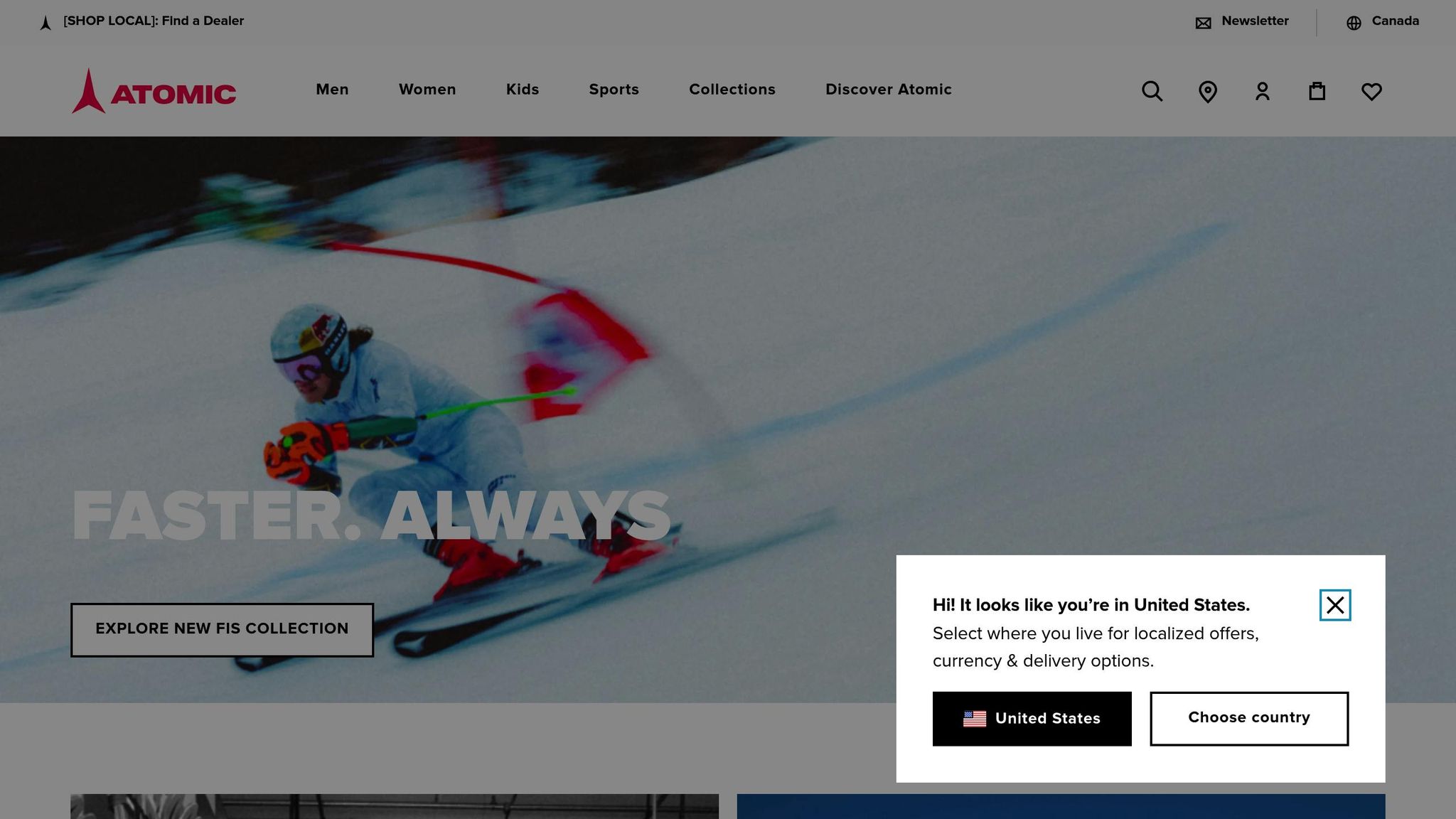
Atomic Maverick 95 Ti to klasyczny przykład tradycyjnych nart all-mountain. Z talią 95 mm i konstrukcją z laminatu tytanowego, jest zaprojektowany do radzenia sobie z różnorodnymi warunkami. Jednak w porównaniu z nowoczesnymi Snowfeet* Skiblades pokazuje, jak bardzo technologia narciarska przesunęła się w kierunku bardziej wszechstronnych i kompaktowych rozwiązań.
Precyzja i trzymanie krawędzi
Zbudowany z laminatu tytanowego i pełnej długości metalowych krawędzi, Maverick 95 Ti oferuje niezawodną przyczepność na przygotowanych trasach. Jest stabilny i budzi zaufanie, zwłaszcza u zaawansowanych narciarzy wykonujących carving z dużą prędkością na twardym śniegu. Jednak wiąże się to z wolniejszymi przejściami krawędź do krawędzi. Tutaj błyszczą Snowfeet* Skiblades – zostały zaprojektowane do szybszej zmiany krawędzi, dając narciarzom natychmiastową informację zwrotną i lepszą kontrolę w ciasnym, technicznym terenie.
Moc na mieszanym terenie
Maverick 95 Ti zapewnia stałą wydajność w zmiennych warunkach, oferując stabilność i impet. Ale Snowfeet* Skiblades idą o krok dalej, łącząc moc z zwinnością. To połączenie pozwala narciarzom szybciej dostosowywać się do zmieniającego się terenu, co może zrobić ogromną różnicę, gdy potrzebne są reakcje w ułamku sekundy.
Przenośność i wygoda
Tu Maverick 95 Ti pokazuje swoje tradycyjne korzenie. Transport tych nart oznacza radzenie sobie z dużymi pokrowcami lub bagażnikami dachowymi, co nie jest zbyt wygodne w podróży. Snowfeet* Skiblades natomiast mieszczą się bez problemu w standardowym bagażu, co ułatwia zabranie ich na wyjazdy – bez dodatkowego sprzętu.
Zwinność w ciasnym terenie
Dłuższe narty, takie jak Maverick 95 Ti, mogą mieć trudności w ciasnych miejscach, takich jak przejazdy między drzewami, muldy czy wąskie żleby. Ich rozmiar utrudnia szybkie, ostre skręty. Snowfeet* Skiblades, dzięki kompaktowej konstrukcji, doskonale radzą sobie w takich sytuacjach. Pozwalają na szybkie, precyzyjne ruchy, zamieniając trudny teren w ekscytujący plac zabaw dla doświadczonych narciarzy.
Podczas gdy Maverick 95 Ti trzyma się tradycyjnej wydajności all-mountain, Snowfeet* Skiblades oferują świeże podejście z niezrównaną zwinnością i przenośnością. Dla zaawansowanych narciarzy chcących przekraczać granice, wyznaczają nowy standard.
8. Rossignol Experience 88/86
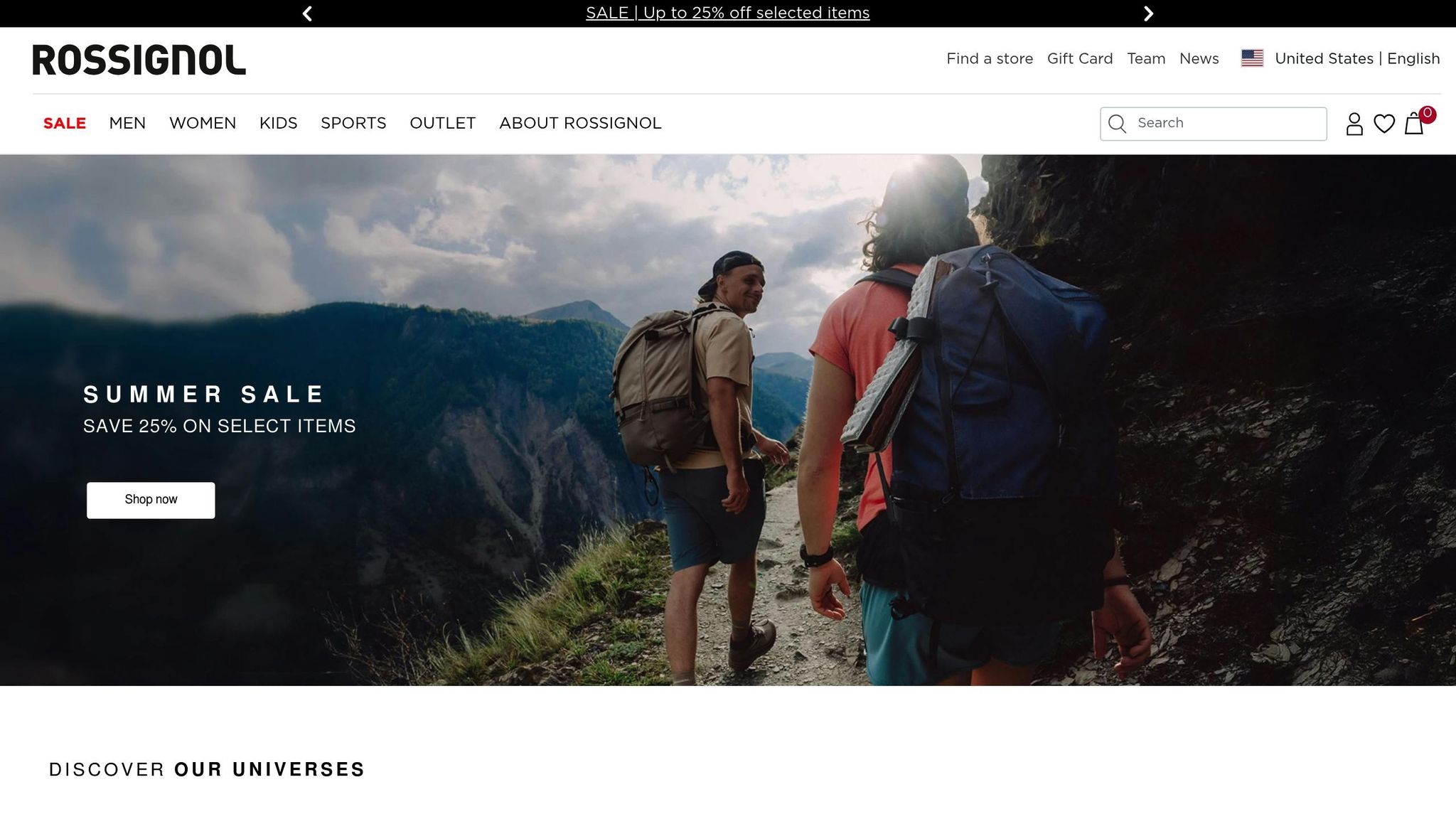
Rossignol Experience 88/86 trzyma się sprawdzonej formuły: szerokość talii 88 mm i długości od 5'7" do 6'2". To klasyczny design, który od lat cieszy się popularnością. Jednak w porównaniu z kompaktowymi i nowoczesnymi Snowfeet* Skiblades wyraźnie widać różnice – zwłaszcza w takich aspektach jak precyzja, moc, przenośność i zwrotność.
Precyzja i trzymanie krawędzi
Experience 88/86 błyszczy na przygotowanych trasach, oferując solidny chwyt krawędzi dzięki pełnej długości metalowym krawędziom i bocznym ściankom. Został zaprojektowany do długich, szerokich skrętów z dużą prędkością. Jednak jego większa długość może być pewnym ograniczeniem. Zaawansowani narciarze mogą potrzebować wcześniej inicjować skręty, co może być uciążliwe, gdy warunki szybko się zmieniają.
Snowfeet* Skiblades z kolei stawiają na szybkie reakcje. Dzięki krótszym profilom 39 i 47 cali, krawędzie wchodzą w kontakt niemal natychmiast, dając lepszą kontrolę w technicznych lub ciasnych miejscach.
Moc na mieszanym terenie
Experience 88/86 radzi sobie, gdy śnieg staje się wymagający. Jest stabilny i niezawodny, ale ta stabilność często wymaga większego wysiłku przy dostosowywaniu się do różnych rodzajów terenu, takich jak przygotowane stoki, oblodzone fragmenty czy rozdrobniony śnieg.
Snowfeet* Skiblades radzą sobie z tymi przejściami z łatwością. Ich krótsza długość zmniejsza powierzchnię styku ze śniegiem, co czyni je bardziej responsywnymi. Niezależnie czy tniesz przez zlodowaciały śnieg, obracasz się na oblodzonych odcinkach, czy suniesz przez puch, oferują płynniejszą, bardziej adaptacyjną jazdę.
Przenośność i wygoda
Tu Experience 88/86 pokazuje swoją tradycyjną stronę. Transport tych nart zwykle oznacza radzenie sobie z bagażnikami dachowymi lub dużymi pokrowcami na narty. Niezbyt przyjazne w podróży.
Snowfeet* Skiblades? Nie potrzebujesz dodatkowego sprzętu. Ich kompaktowy rozmiar ułatwia przenoszenie, czy to wrzucasz je do bagażnika, czy zabierasz w samolot.
Zwinność w ciasnym terenie
Dłuższe narty, takie jak Experience 88/86, mogą wydawać się nieporęczne w ciasnych przestrzeniach. Niezależnie czy lawirujesz między drzewami, pokonujesz muldy czy wąskie żleby, długość zmusza do starannego planowania każdego skrętu.
Snowfeet* Skiblades zmieniają zasady gry. Ich krótszy design daje ci swobodę ruchu i zwinność. Ciasne przejścia między drzewami, strome muldy czy wąskie żleby stają się mniej przerażające, pozwalając jeździć z większą spontanicznością i pewnością siebie.
Zalety i wady
Wybór odpowiednich nart all-mountain dla zaawansowanych narciarzy wymaga rozważenia mocnych i słabych stron każdej opcji. Każdy model ma swoje zalety, a najlepszy wybór zależy od twojego stylu jazdy i priorytetów. Oto podsumowanie tego, co oferuje każdy typ.
Snowfeet* Skiblades (dostępne w długościach 99 cm i 120 cm) to przede wszystkim kontrola i zwinność. Te kompaktowe narty błyszczą w ciasnym terenie, muldach i technicznych odcinkach, gdzie szybkie zmiany krawędzi są kluczowe. Ich niewielki rozmiar ułatwia transport – nie potrzebujesz bagażników dachowych ani dużych pokrowców – a krzywa uczenia się jest łagodniejsza, co pozwala narciarzom szybciej opanować zaawansowane techniki. Trzeba jednak pamiętać, że mogą być mniej stabilne przy dużych prędkościach i mogą mieć trudności z unoszeniem się w głębszym puchu w porównaniu do dłuższych modeli.
Z drugiej strony, tradycyjne długie narty takie jak Nordica Enforcer 99, seria Völkl Mantra i Blizzard Anomaly 99 zapewniają doskonałą stabilność przy dużych prędkościach oraz znakomite osiągi w puchu. Ich dłuższe krawędzie oferują lepszą przyczepność na twardym śniegu i stabilne prowadzenie w zmiennych warunkach. Jednak są mniej zwinne w ciasnych przestrzeniach, wymagają więcej wysiłku przy szybkich skrętach i mogą sprawiać wrażenie nieporęcznych w trudnym, technicznym terenie. Transport jest również bardziej uciążliwy, ponieważ zazwyczaj potrzebują bagażników dachowych lub dużych pokrowców narciarskich.
Narty takie jak Salomon QST 106 i Atomic Maverick 95 Ti stanowią kompromis, oferując wszechstronność w mieszanych warunkach. Znajdują się gdzieś pomiędzy zwinnością krótkich nart a stabilnością długich, ale nadal wymagają tradycyjnych metod transportu.
Rossignol Experience 88/86 to niezawodny wybór na przygotowane trasy, oferujący przewidywalne osiągi. Jednak może nie sprostać wymaganiom narciarzy szukających wszechstronności w szybko zmieniających się warunkach.
Oto szybkie porównanie kluczowych cech:
| Cechy | Krótkie narty (Snowfeet*) | Tradycyjne długie narty |
|---|---|---|
| Zwinność | Doskonałe – szybkie, ostre skręty | Ograniczone w ciasnych przestrzeniach |
| Mobilność | Pasują do bagażnika lub plecaka | Wymagają bagażników dachowych lub pokrowców |
| Krzywa uczenia się | Łatwe i dodające pewności siebie | Bardziej wymagające |
| Stabilność przy dużych prędkościach | Umiarkowana | Wybitna |
| Wydajność w puchu | Dobre w umiarkowanym puchu | Wyjątkowe unoszenie |
| Wszechstronność terenu | Bardzo wszechstronne | Specjalistyczne na konkretne warunki |
| Wymagany wysiłek | Minimalny – łatwy do kontrolowania | Wysoki – wymaga więcej siły |
Wybór sprowadza się do Twojej filozofii narciarskiej. Tradycyjne długie narty sprzyjają klasycznemu stylowi – pewnemu pokonywaniu zakrętów i terenu. Tymczasem Snowfeet* Skiblades odpowiadają dynamicznemu, responsywnemu stylowi, oferując precyzję i zmniejszone zmęczenie. Dla narciarzy ceniących zwinność i kontrolę ponad samą prędkość, te krótsze narty mogą uczynić stoki bardziej zabawnymi i angażującymi.
Podsumowanie
Po zapoznaniu się z opcjami nart all-mountain, jedno jest jasne: nie potrzebujesz długich nart, by cieszyć się precyzją i mocą na stoku. Podczas gdy klasyki takie jak Nordica Enforcer 99 i seria Völkl Mantra dominowały na rynku przez lata, Snowfeet* Skiblades wprowadzają świeże podejście do zaawansowanego narciarstwa.
Snowfeet* Skiblades (99 cm) i Short Skis (120 cm) wnoszą zupełnie nowy poziom kontroli i reaktywności, wszystko to bez ciężaru tradycyjnych nart. Wyobraź sobie pakowanie nart tak łatwo jak innych bagaży i jednocześnie gotowość do podbicia różnorodnego terenu. Te krótsze narty to nie tylko wygoda – zmieniają sposób, w jaki doświadczamy technicznego narciarstwa.
Dla narciarzy, którzy uwielbiają muldy, przeciskanie się między gęstymi drzewami czy szybkie zmiany kierunku, modele Snowfeet* oferują niezrównaną zwinność. Zaawansowani narciarze, którzy znają zmęczenie i trudności związane z długimi nartami, docenią wolność, jaką dają te kompaktowe opcje. Dodatkowo ich konstrukcja eliminuje potrzebę bagażników dachowych, dużych pokrowców czy dodatkowych opłat za bagaż lotniczy, co sprawia, że wyjazdy na narty są łatwiejsze i bardziej dostępne.
Oczywiście, jeśli zależy Ci na stabilności przy dużych prędkościach na przygotowanych trasach lub pływaniu po głębokim puchu, tradycyjne długie narty nadal mają przewagę. Ale jeśli skupiasz się na zwinności, kontroli i bezproblemowym przemieszczaniu się, Snowfeet* wyznacza nową drogę.
Najczęściej zadawane pytania
Co sprawia, że Snowfeet Skiblades są lepsze niż tradycyjne długie narty dla zaawansowanych narciarzy?
Snowfeet Skiblades wnoszą nowy poziom zwinności, kontroli i wszechstronności dla doświadczonych narciarzy. Dzięki kompaktowym rozmiarom – od 65 do 120 cm – są lekkie i łatwe do przenoszenia. Ale prawdziwa magia dzieje się na stokach. Ich krótsza długość sprawia, że szybkie skręty i triki są bezwysiłkowe, dając zabawną i dynamiczną jazdę. Niezależnie czy carvingujesz na przygotowanych trasach, korzystasz z parku terenowego, czy eksplorujesz mieszany teren, te skiblades są stworzone do zabawy.
W przeciwieństwie do tradycyjnych długich nart, które stawiają na prędkość i stabilność na długich dystansach, Snowfeet Skiblades są zaprojektowane dla narciarzy, którzy chcą zmieniać styl i spróbować czegoś innego. Pozwalają przesuwać granice, eksperymentować z nowymi ruchami i cieszyć się bardziej energetycznym stylem jazdy. Dla zaawansowanych narciarzy oferują idealne połączenie wydajności i przenośności – zapewniając precyzję i kontrolę bez rezygnacji z emocji jazdy.
Co sprawia, że Snowfeet* Skiblades są świetnym wyborem dla zaawansowanych narciarzy często podróżujących?
Snowfeet* Skiblades to fantastyczny wybór dla doświadczonych narciarzy, którzy kochają szusować po stokach, zachowując lekkość i przenośność. Dzięki kompaktowej konstrukcji łatwo je schować w bagażniku samochodu, schowku nad głową czy w ciasnej przestrzeni do przechowywania – co czyni je idealnymi na wyjazdy, gdzie każdy centymetr przestrzeni się liczy.
Ale te skiblades to nie tylko wygoda. Zapewniają imponującą kontrolę i zwinność na różnych terenach, czy to carving na przygotowanych trasach, czy eksploracja trudniejszych terenów poza trasą. Ich krótsza długość oznacza łatwiejszą obsługę, dając doświadczonym narciarzom precyzję potrzebną do radzenia sobie z różnorodnymi warunkami bez konieczności dźwigania dużego sprzętu.
Czy są jakieś tereny lub warunki, w których Snowfeet* Skiblades mogą nie sprawdzać się tak dobrze?
Snowfeet* Skiblades błyszczą pod względem wszechstronności, kontroli i przenośności. Jednak mogą nie być twoim pierwszym wyborem na głęboki puch, bardzo nierówny teren czy strome, ekscytujące stoki. Ich krótsza konstrukcja jest idealna do precyzji i szybkich manewrów, ale nie zapewnia takiego unoszenia w głębokim śniegu ani stabilności potrzebnej na trudnym podłożu.
Jeśli jesteś doświadczonym narciarzem, który głównie trzyma się przygotowanych tras, ubitego śniegu lub umiarkowanych przygód poza trasą, Snowfeet* Skiblades oferują doświadczenie, któremu trudno dorównać. Mimo to, na wyprawy w dzikie tereny lub epickie dni z głębokim śniegiem, dłuższe, tradycyjne narty mogą być lepszym narzędziem do zadania.





















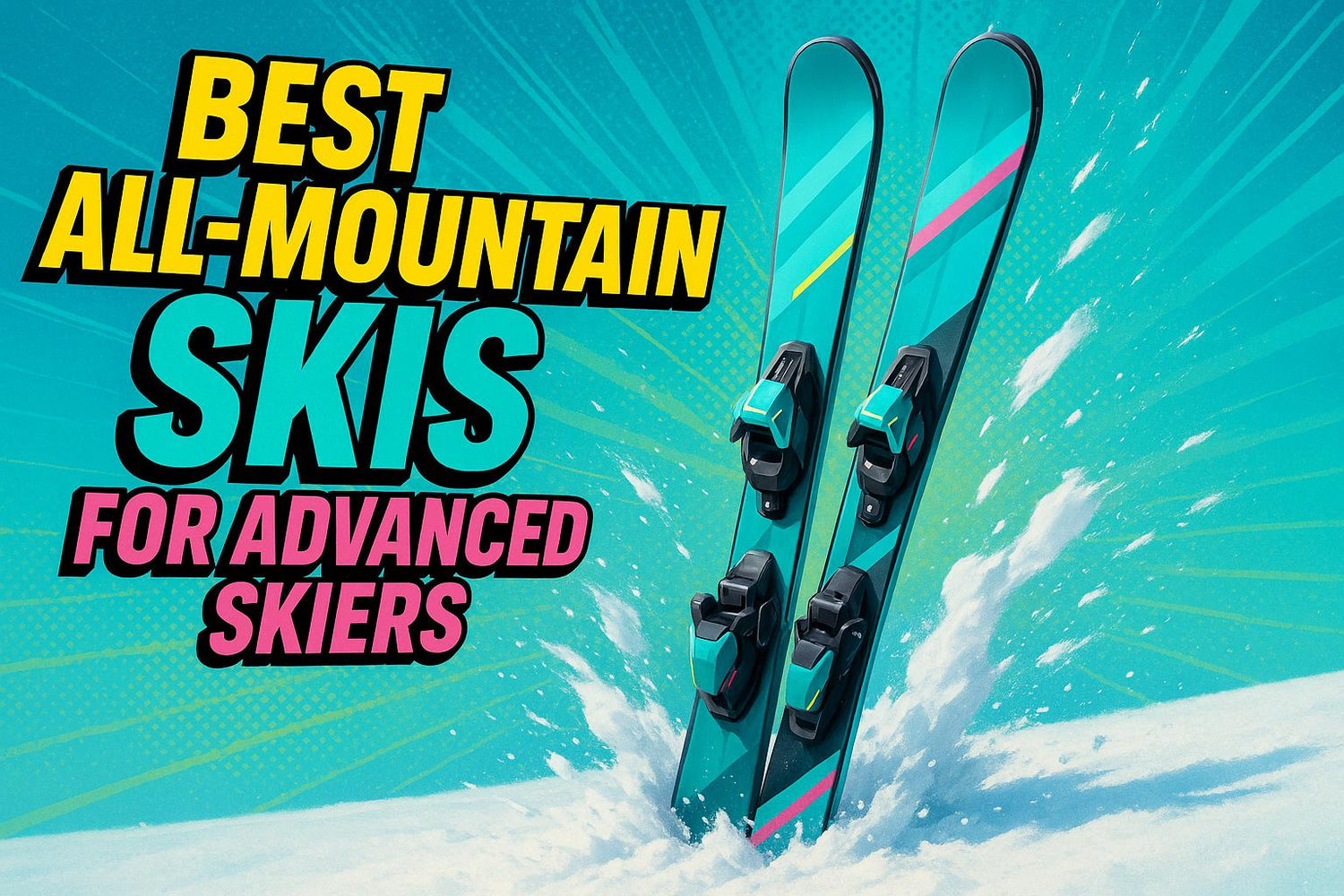
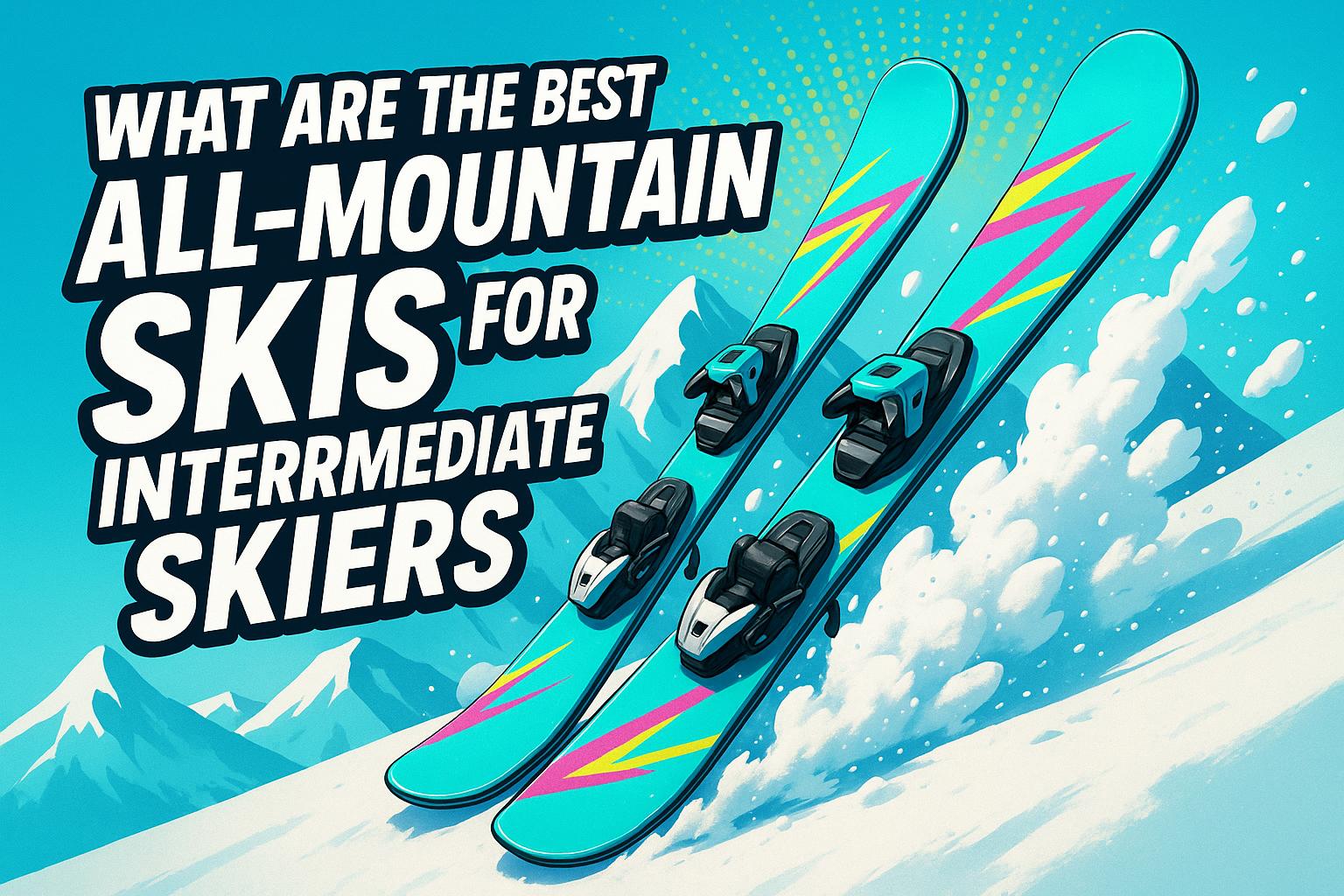
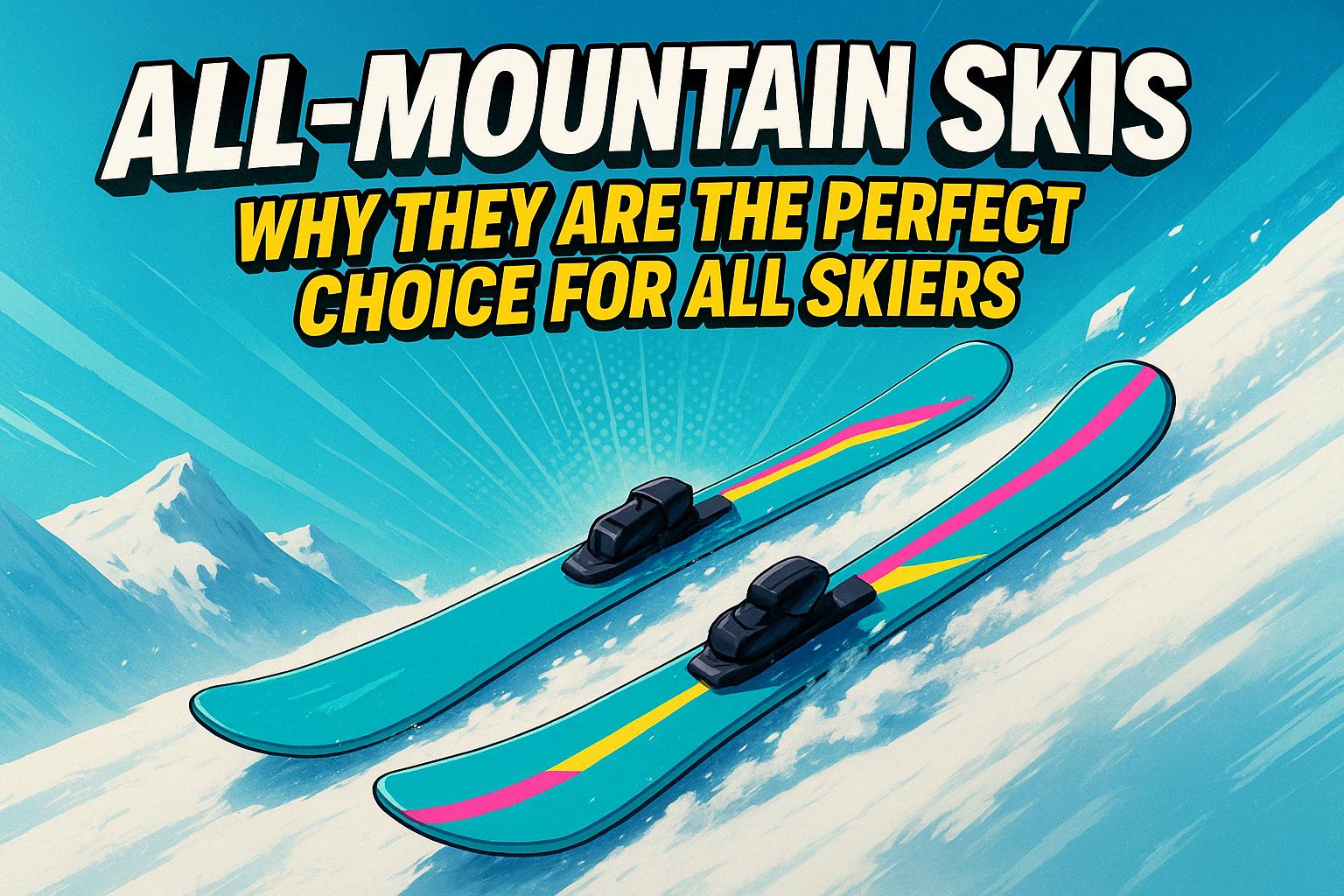










Zostaw komentarz
Ta strona jest chroniona przez hCaptcha i obowiązują na niej Polityka prywatności i Warunki korzystania z usługi serwisu hCaptcha.